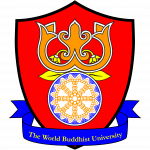Ajahn Buddhadasa's writing
Buddhadasa's works literally take up an entire room in the National Library of Thailand. The following are some of his well-known books in English translation.
-
Handbook for Mankind.
-
Mindfulness with Breathing.
-
The Prison of Life.
-
Nibbana for Everyone.
-
Forest Wat, Wild Monks.
-
Essential Points of Buddhist Teaching.
-
Emptiness.
-
The Undying.
-
Rejet et accueil de l'Occident
-
NOTES SUR LE BOUDDHISME ZEN EN THAILANDE
